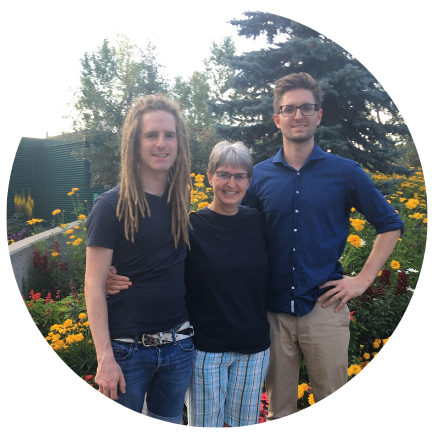Community Corner with Keith Meldrum
How chronic illnesses are more than just physical symptoms
After receiving a mitochondrial disorder diagnosis, I was first relieved as I finally had an answer, but this was soon followed by frustration. I was relieved to know why my body was doing strange things I couldn’t control and that I wasn’t making them up. Still, I was frustrated as I already had other health issues, namely chronic neuropathic pain following a near-fatal car accident in 1986. Recently, I found myself dealing with new mitochondrial symptoms, and my reaction was, “Seriously, now this too?!” Mitochondrial disorders are incredibly challenging, but having lived with chronic pain for over 37 years, I have come to understand how our day-to-day lives significantly impact our health.
As an advocate, university lecturer, and peer-reviewed published researcher, I have learned how stress, psychological, social, and emotional factors significantly affect chronic illness and the sympathetic nervous system, which is our fight-or-flight response.
As a result, these factors negatively impact our overall health, thereby adding to or increasing our symptoms. Being aware of these impacts and doing what we can to help minimize the flight-or-flight response can help us better manage our symptoms. This doesn’t mean we can think away our mitochondrial disorders, but it can offer more physical and mental energy to allow us to live better. This can seem counterintuitive, and it took me years to understand, but doing the little things that bring a sense of peace or calm can really help. This involves activities that offer us joy, such as listening to music or playing an instrument, reading, socializing with family or friends, or being in nature. Further, while exercise can be challenging, many forms of meaningful movement are helpful for mito patients, such as walks, gardening or riding a bike. This is referred to as self-management.
It is important to understand that managing ones mito disorder isn’t all on us and that it is fundamentally important to good health care to have collaborative relationships, called therapeutic alliances, with our healthcare providers. With this, self-management becomes supported self-management – a team effort. Living with a mitochondrial disorder is hard, and supported self-management is important in managing our health. Therapeutic alliance as a tenet of effective healthcare is not a new philosophy; Canadian physician Sir William Osler (1849 to 1919) is quoted to have said that “The good physician treats the disease; the great physician treats the patient who has the disease”. Some academics believe Osler’s quote is a paraphrase of Hippocrates 2,500-year-old quote, “It is far more important to know what person the disease has than what disease the person has.”
Living with a mitochondrial disorder is physically and emotionally demanding. This is why it is important that healthcare systems embrace a person-centred model of care – treating the person, not their disease. As patients, there are things we can do to help us live better, but working collaboratively with our healthcare providers leads to a synergistic outcome; the sum is greater than the individual elements.





 Ever since she can remember, Alyson Maxwell has experienced chronic pain and near- constant headaches. Growing up in the ‘70s and ‘80s, Alyson knew she wasn’t quite like the other kids. “I used to randomly fall down the stairs – my legs would just give out,” she says. “I often tripped and my coordination was horrible. I’d play really hard with the other kids one day and then the next day I’d hang out on the couch with a book or play quietly by myself. I think that I knew, subconsciously, that I had to recharge my body.”
Ever since she can remember, Alyson Maxwell has experienced chronic pain and near- constant headaches. Growing up in the ‘70s and ‘80s, Alyson knew she wasn’t quite like the other kids. “I used to randomly fall down the stairs – my legs would just give out,” she says. “I often tripped and my coordination was horrible. I’d play really hard with the other kids one day and then the next day I’d hang out on the couch with a book or play quietly by myself. I think that I knew, subconsciously, that I had to recharge my body.”
 Play is work for kids and Aiden and Landon have found the perfect workspace. They love playing in a bouncy castle that remained in the family basement after a birthday party! It helps Aiden move more and more independently. It’s also fun, soft, safe,surrounded by walls, and offers unintentional benefits like building core and grip strength.
Play is work for kids and Aiden and Landon have found the perfect workspace. They love playing in a bouncy castle that remained in the family basement after a birthday party! It helps Aiden move more and more independently. It’s also fun, soft, safe,surrounded by walls, and offers unintentional benefits like building core and grip strength.
 As a teenager, Zach felt he and his family were living in some strange sort of limbo. His brother also developed chronic fatigue. They knew that what they were experiencing wasn’t normal but there was no infrastructure in place to put them on the radar. Zach tried constantly to advocate for his family but was unsuccessful at getting them the care and support they needed.
As a teenager, Zach felt he and his family were living in some strange sort of limbo. His brother also developed chronic fatigue. They knew that what they were experiencing wasn’t normal but there was no infrastructure in place to put them on the radar. Zach tried constantly to advocate for his family but was unsuccessful at getting them the care and support they needed.